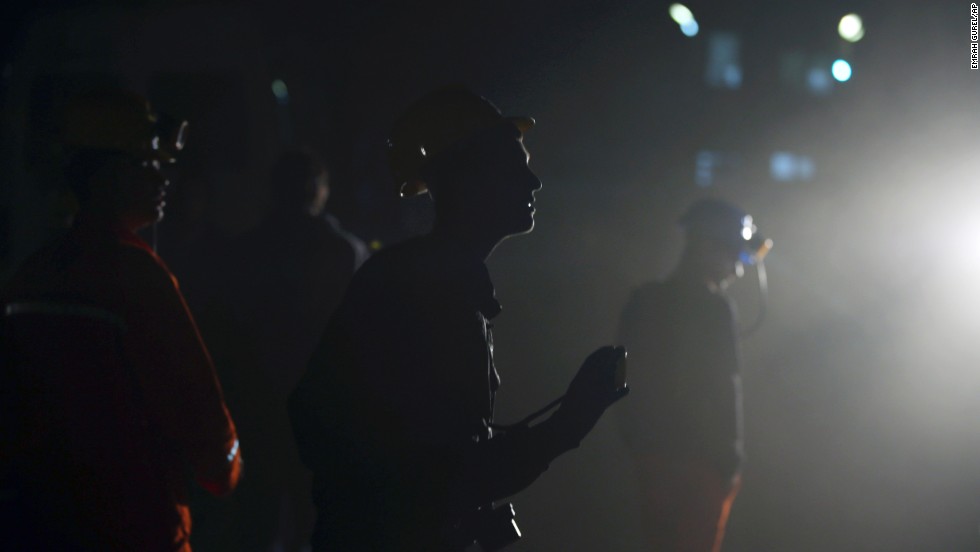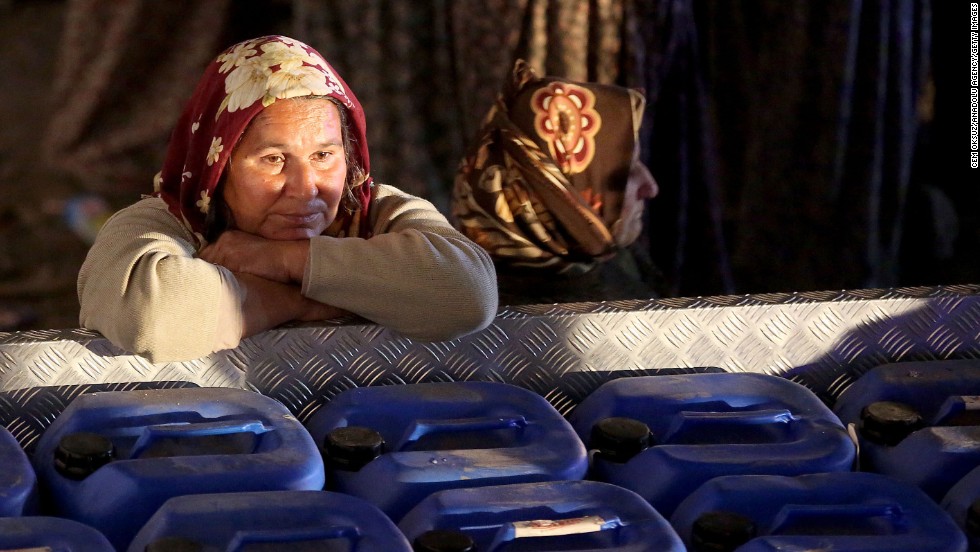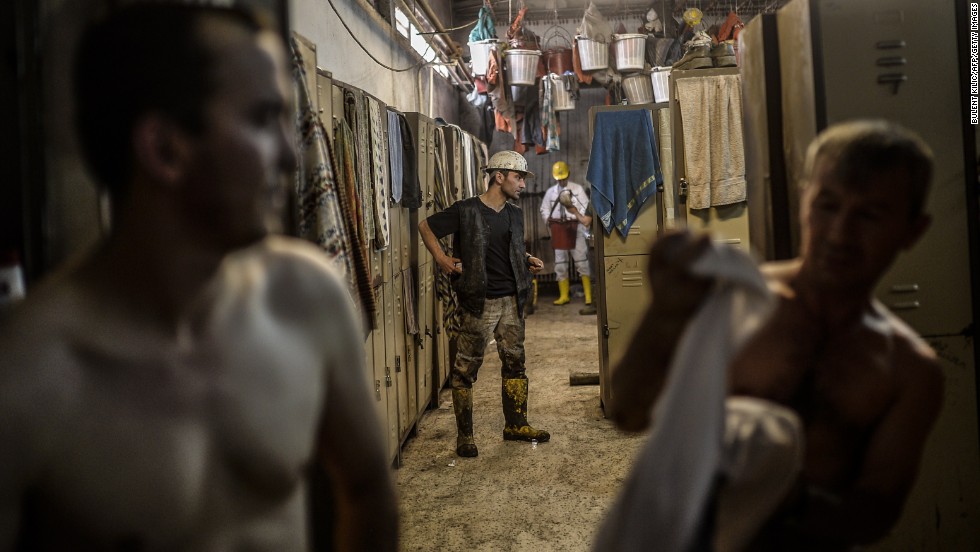www.DavittMcAteer.com
Davitt McAteer & Associates

Amended Statement of
J. Davitt
McAteer,
Vice President of Wheeling Jesuit University
Before the
Subcommittee
on Energy and Mineral Resources
of the National
Resources Committee
United States
House of Representatives
February 12,
2009
Good Morning, Chairman
Rahall, Chairman Costa, and distinguished Members of the Subcommittee
on Energy and Mineral Resources. My name is Davitt McAteer and I
wish to thank you for this opportunity to appear before you today. I
am the Vice President of Sponsored Programs at Wheeling Jesuit
University where I am responsible for research efforts at the
National Technology Transfer Center (NTTC) and Center for Educational
Technologies (CET).
On December 22, 2008, a
Coal Ash Impoundment operated by the Tennessee Valley Authority
ruptured and sent a billion gallons of sludge across 300 acres of
Eastern Tennessee (New York Times,
January 6, 2009). This facility is one of more than 600 Coal
Combustion Waste sites across the United States. Of that number, it
is estimated that 300 are impoundments and 300 are landfills used by
440 coal-fired utilities. (EPA Estimate / Notice of Data Availability
on the Disposal of Coal Combustion Wastes in Landfills and Surface
Impoundments, Docket # EPA-HQ-RCRA-2006-0796-0015).
Currently approximately
129 million tons of coal combustion residues are produced annually
and this number is expected to increase dramatically in the coming
years. (Annual Energy Outlook, 2007 Energy Information Administration
and Department of Energy Report No. 0383/2007). Besides the safety
considerations surrounding the methods of disposal, health concerns
also exist. Since 1999, the EPA has issued a number of reports
warning about substantial risk to human health and to the environment
from poorly managed coal ash disposal facilities. (U.S. EPA
(Environmental Protection Agency). 2007. Coal
Combustion Waste Damage Case Assessments.
(Available from the docket to the Notice of Data Availability on the
Disposal of Coal Combustion Wastes in Landfills and Surface
Impoundments, Docket # EPA-HQ-RCRA-2006-0796-0015).
I first would like to
commend this Committee and Chairman Rahall for their leadership in
acting swiftly to address this growing problem.
Coal ash is presently
disposed of in wet or dry impoundments or piles. These impoundments
are not unlike coal impoundments which are facilities built of coal
waste produced at mines during the cleaning and preparation of the
coal before burning. These “coal impoundments” typically consist
of rock, coal fines, clay and other impurities which are placed
across a valley creating an impoundment. These impoundments provide
a permanent storage place for the waste materials and equally, if not
more important to the coal operator, a ready supply of cheap water
which the mine uses to clean the newly produced coal. Tragically,
one of these impoundments collapsed in 1972 in Buffalo Creek, West
Virginia, killing 127 people and destroying hundreds of homes and
structures. Following that disaster, the Federal government and the
state of West Virginia adopted new regulations governing the
construction, design and management for such impoundments. More
recently on October 11, 2000 in Martin County, Kentucky an
impoundment operated by the Massey Energy Company failed through the
impoundment bottom. The slurry then broke through two underground
mine seals discharging approximately 300 million gallons of coal
slurry and water sludge into the creeks and rivers of West Virginia
and Kentucky. Following the disaster, at the request of Senator
Robert C. Byrd and Congressman Nick J. Rahall, II, the National
Academy of Sciences, National Research Council, undertook a study of
coal waste impoundments. Their report was released in 2002. Coal
Waste Impoundments: Risks, Responses, and Alternatives;
Committee on Coal Waste Impoundments, Committee on Earth Resources,
Board on Earth Sciences and Resources, National Research Council, 244
pages, 2002. While no one was killed, EPA called the collapse the
largest environmental disaster in the south eastern portion of the
United States. That is until the release of the TVA Kingston,
Tennessee facility on December 22, 2008.
Coal waste impoundments
have caused concern and fear among coal field residents for a number
of years, at least since Buffalo Creek. The failure at Martin County
led to renewed concerns. In order to address the issues surrounding
coal impoundments, in June, 2003, with the help of Senator Robert C.
Byrd, we established the Coal Impoundment Project at Wheeling Jesuit
University’s National Technology Transfer Center and Center for
Educational Technologies (www.coalimpoundment.org).
The Coal Impoundment
Project grew out of the knowledge gained from the Martin County
failure, that the people who need to know the most about the
impoundments – those living downstream – knew the least about
them. Moreover, the project is an effort to address several issues
relating to coal waste disposal, including providing information to
citizens about impoundments improving safety precautions and
conducting research to improve impoundment safety and security.
These investigations have
included testing filtration materials, testing automatic wireless
instrumentation for monitoring the dam conditions, and the use of
robots for remote underground mine mapping under impoundments.
Current research includes investigating hand-held computers with
Global Positioning Systems, cameras, and audio recording to assist
field inspectors with recording information and the ability to
automatically upload information to a centralized electronic record
center. This technology could improve impoundment inspections,
management of the site, engineering oversight, regulatory compliance,
and safer conditions for workers and nearby communities.
The project also includes
efforts to research new technologies to reduce the amount of
impounded materials and to reduce the need for the use of this method
of disposal by researching beneficial uses for the material.
The December, 2008 TVA
ash impoundment failure thus has a certain ring of history repeating
itself and perhaps we can learn from the coal impoundment experience.
The guiding philosophy of
the Wheeling Jesuit University Coal Impoundment Program is that
better information shared in a coordinated way will help reduce
anxiety among coal impoundment neighbors and timely information about
incidents/leaks will help responsible parties to react in a more
expeditious fashion to minimize risks and improve spill prevention.
One important aspect of
the program is the identification of coal impoundments, mapping their
locations and making emergency evacuation plans, which are required
in West Virginia, publically available. Thru a series of public
meetings, citizens in the coalfields have been alerted to the
locations of nearby impoundments and several communities have begun
to work with local officials to improve notification in case of an
emergency, for example, using reverse 911, and to improve the
emergency evacuation plans.
In addition, we have
initiated table top exercises and information exchanges with state
and federal agencies, county emergency management personnel and coal
company officials which have improved preparedness and emergency
planning.
It seems clear from the
Tennessee incident and a second event in Alabama on January 9, 2009,
the failure of voluntary industry efforts and inadequate state by
state regulatory efforts that coal ash disposal facilities need
strong federal regulations. Furthermore, that regulating scheme
needs to be multifaceted given the nature of the problem.
As the 2006 National
Research Council of the National Academy of Sciences, Managing
Coal Combustion Residues in Mines report
concludes, a strong regulatory approach involving both the Department
of Interior Office of Surface Mining (OSM) and the Environmental
Protection Agency (EPA) would seem to be the most logical approach
given the multiple risks created by the different methods of coal ash
waste disposal. OSM under Surface Mine Control & Reclamation Act,
30 USC §1201 et seq.,
(SMCRA) has the regulatory framework in place to deal with the coal
combustion residue placed in mine sites, and EPA, as it had planned
to do in 2000, should promulgate regulations covering CCR disposal in
landfills under the Resource
Conservation and Recovery Act (RCRA)(65
CRF §32214).
I would add that involving MSHA in plan application approval and
inspector training discussed below could expedite the program. While
joint regulatory schemes commonly suffer from a lack of clear
jurisdiction, given the nature of this problem such a joint approach
seems best suited to quickly address this problem (The NRC Committee
also noted that a number of public interest groups had expressed
concern that OSM and other SMCRA related agencies lacked the will or
ability to deal effectively with this issue; perhaps the joint
approach would improve the confidence of the public).
It also should be noted
that coal ash impoundments are more like coal impoundments than
standard dams, and require different engineering and monitoring
approaches. Inspection methods, training, and record keeping
techniques need to be specific for these unique facilities. This
conclusion is the result of analyzing MSHA’s experience with coal
impoundments. While standard dams once built are typically static
facilities with few variables, coal impoundments and Coal Combustion
Residue impoundments are dynamic facilities which have more variables
as they are constantly changing, receiving additional materials, etc.
Thus, the CCR disposed of at mine sites and impoundments should draw
upon MSHA’s experience. (See Appendix A, MSHA Impoundment Data
Form)
These facilities require
frequent monitoring and inspections by the responsible owner and/or
operator as well as federal and state agency inspectors. For
example, currently, under the Federal Mine Safety & Health Act of
1977, 30 USC §813 et
seq. coal impoundments are inspected
quarterly by MSHA inspectors and every seven days by company
personnel trained by MSHA. Inspection reports are required to be
kept and filed with MSHA.
Coal Impoundment
incidents, failures, and spills are also required to be reported and
investigated, and a protocol is in place to be followed if a serious
incident is observed, involving higher up company and government
officials - a procedure, which it is reported, did not exist at the
Kingston, Tennessee, December 22, 2008 failure site. These reported
incidents are also included in the WJU website
(http://www.coalimpoundment.org). Such reporting has resulted in
owners and operators being proactive in preventing and avoiding
incidents, as well as keeping the public informed about the number
and severity of those incidents should any occur.
One aspect of the West
Virginia regulatory program – the creation by impoundment operators
of Emergency Action Plans is an area where the proposed H.R. 493
could be strengthened. These plans are required when impoundments
have the potential for negatively impacting people and homes and are
ranked as “High Hazard Dams.”
One area which MSHA Coal
Impoundment Regulations do not adequately cover but which should be
of concern for coal combustion residue facilities is the monitoring
of chemicals and heavy metals that go into and come out of the
facilities. The collection of impurities and harmful materials
during the burning of coal to avoid releasing them into the
atmosphere produces the fly ash and bottom ash waste products which
may have a high concentration of those impurities. Given the nature
of the waste it is only logical that monitoring the make up of the
material being placed in the facilities as well as monitoring any
discharge from the facility through leaching, drainage and/or runoff
is essential to protecting human health and the environment. In our
experience, this lack of knowledge as to the makeup of coal impounded
material - what is in the impoundment - has been recognized as a
drawback in the ability of the owner and operator as well as the
federal or state agencies to adequately treat runoff or drainage
products.
The use of “mine sites”
as disposal facilities for CCR raises additional potential concerns
as well as additional potential benefits in assessing options the
disposal sites. As the National Research Council concluded in its
Managing Coal Combustion Residue in Mines
(NAS 2006) report, putting CCR’s in coal mines as part of the
reclamation process is a viable management option as long as (1) CCR
placement is properly planned and is carried out in a manner that
avoids significant adverse environmental and health impacts and (2)
the regulatory process for issuing permits includes clear provisions
for public involvement (p. 1, Summary 2006).
Mining operations
frequently disrupt the rock formation below the coal seam allowing
ground water pollution from CCR deposited on mine sites easier access
to ground water aquifers. Also underground mine site locations are
frequently below the water table where leachates can contaminate the
water table.
In our studies of runoff
at coal impoundments, we have encountered water contamination that
appears to be connected to the coal impoundment leaching, drainage
and runoff. The National Academy of Sciences expressed just such a
concern in their 2006 study. According to NAS, “A review of 24
proven CCR landfill damage cases reveals one commonality among the
incidents: when CCRs react with water and the resulting leachate is
not contained, adverse consequences can result.…In some landfill
settings, groundwater has been degraded to the point that drinking
water standards were exceeded off-site. In other landfills and
surface impoundments, contamination of surface waters has resulted in
considerable environmental impacts.…The committee concluded that
the presence of high levels of some contaminants in CCR leachates may
create human health and ecological concerns at or near some mine
sites over the long term,” indicating the need for long term
monitoring of ground and surface waters at such sites.
Further, a draft EPA
report measuring the health risks posed by disposal practices at coal
ash dumps finds that pollution from these sites significantly
increases both cancer and noncancer health risks and degrades water
quality in groundwater supplies. (RTI (Research Triangle Park) 2007.
Human and Ecological Risk Assessment of Coal
Combustion Wastes, Draft Prepared for: U.S.
Environmental Protection Agency, Office of Solid Waste.
Other concerns exist
about the long term impact of mine site disposal and storage. West
Virginia’s Department of Environmental Protection director, Randy
Huffman testified as recently as Tuesday, February 10, 2009, that WV
DEP remains concerned about the negative impact on water supplies
from injecting coal mine slurry into underground mines and wells
(Charleston Gazette, February
11, 2009).
Analysis of the recent
fly ash dam failure in Tennessee resulted in contamination of
waterways with arsenic and radium. A Duke University report
concluded “exposure to radium and arsenic containing particles in
the ash could have severe health implications in the affected area.”
(Duke University press release, January 30, 2009). And although the
report found only trace elements beyond the damned tributary, all
studies support the conclusion that special care must be taken in the
design management and operation of fly ash facilities to ensure
environmental and human safety and health protections at CCR
facilities.
In the 36 years since
Buffalo Creek, MSHA has gained much knowledge and experience in what
is good design and management for coal impoundments and this
knowledge should serve as a tool for future CCR sites. Moreover, a
best practices approach to operation management of CCR’s should be
part of the approaches considered here. The Coal Impoundment Project
has developed a pilot best practices program and recommends the
implementation of a tailings management framework consisting of
Operation, Maintenance, and Surveillance programs for the integration
of environmental and safety considerations into each stage of the
life cycle of a tailings facility, from initial site selection and
design, through construction and operation, to eventual
decommissioning and closure. The future of coal ash facilities should
include the integration of environmental and safety considerations in
a consistent way for the continuous improvement of the facilities.
Applicants for CCR sites
should not only examine the characteristics of the location to be
used but also the chemical and physical properties of the materials
to be deposited. Facility management must include the studies of
short term and long term impact such facilities have on the ecosystem
as well as any adverse human impact and should include regular and
thorough monitoring of the ground and surface waters around, below
and downstream of the disposal site.
In addition, as is the
case with Coal Impoundment sites, the federal regulations must ensure
that the owner/operator must be sufficiently financially sound to be
able to abate adverse effects to humans and the environment should
such harmful impacts occur. Currently, performance bonds are
required of coal impoundment owners/operators, and it is reasonable
that bonds should be required for fly ash disposal sites as well.
And as is the case under other environmental regulations, the
handling and storage of coal combustion waste should remain the
responsibilities of the generator unless the product is sold for
beneficial use.
Currently, MSHA and OSM
jointly coordinate and approve Coal Impoundment plans and
applications. One suggestion for this Committee is that MSHA be
authorized to assist in CCR impoundment plan approvals and that MSHA
training be provided for OSM and EPA CCR impoundment inspections.
An
additional point raised by the EPA and others is the use of wet
versus dry facilities. That same debate exists with regard to coal
refuse impoundments. Clearly, the dry disposal methods have
significant safety and environmental advantages, although typically
more costly to operate than wet disposal. This Committee should
consider a phased in approach limiting and/or restricting the wet
disposal method in favor of the dry technique, ultimately dry storage
is the preferred method in most situations.
Furthermore,
we much continue to apply new technologies to reduce the amount of
CCR created. Recently, professors at Virginia Polytechnic Institute
and State University (Virginia Tech) reported that progress continues
to be made in developing an economically viable technology to remove
water from even the ultrafine coal slurries. (Virginia Tech News
Release, February 9, 2009). Technologies such as these should be
applied to the disposal of coal ash and thus help reduce the amount
of ash residue created.
Where
permitted, future ash lagoons should be developed so as to provide
secure containment while allowing the ash to eventually dry and
solidify. Such facilities should include the use of composite liners
which have a number of advantages and are required for industrial
waste facilities and adequate monitoring of ground and surface waters
to assure success of the liners, or to avoid accidental harm due to
unanticipated breaches of the liner system.
In
conducting our research we also examined regulations of CCR’s in
other countries, the European Union (EU) recently required a registry
for fly ash products placed on the market as construction material.
On June 1, 2007, the REACH-Regulation (Registration, Authorization,
Evaluation and Restriction of Chemicals) of the European Union
required that each producer or importer of coal combustion products
(CCPs) which were to be placed in the market as construction
materials have to pre-register and register their substances. The
pre-registration requires information on the substance identity, the
tonnages and the name and address of the producer. The registration
requires comprehensive information about toxicology and ecotoxicology
of the substances. Among other benefits to industrial repurposing of
fly ash, this registry provides important information for the
protection of human health and drinking water when deciding how and
where fly ash can be used beneficially. (Feuerborn, J. 2008. EU and
CCP: Coal Combustion Products and REACH.
ECOBA (European Coal Combustion Products Association), 2008.
http://www.ecoba.com/news,document.html?id=274)
In closing, I believe the
creation of this enormous amount of material (CCR) for which no
beneficial uses have been found is a problem which must be addressed.
Beneficial and safe uses of CCR in drywall, concrete, road building,
construction fill and other areas should be encouraged and additional
safe uses should be developed.
Electricity from coal is
a necessary fact of our lives today. Combustion is the means of
converting coal to electricity and ash resulting from that combustion
is important in preventing impurities and hazardous materials from
entering the atmosphere. In effect, in solving one problem, we have
created another for which we need to find a better safer and
healthier method of disposal. This bill and this Committee’s
efforts are major steps in the right direction.
The need to solve this
problem has been recognized by the National Academy of Sciences
National Research Council and the Environmental Protection Agency.
The result of the recent failures in Tennessee and Alabama along with
the EPA and NAS NRC studies and our experiences with coal
impoundments, have made us aware of the negative consequences of
failing to act.
Mr. Chairman, Members of
the Subcommittee, a comprehensive federal program under EPA &
OSM’s joint jurisdiction with assistance from MSHA appears to be
the most logical approach and most effective in addressing the risks
and concerns of coal combustion waste disposal.
Finally, on behalf of
Wheeling Jesuit University our Coal Impoundment Project group and
myself, I would like to thank the Subcommittee for the opportunity to
address this problem which, because of its size alone presents
difficult financial and logistic hurdles, but also because of the
combined human and environmental concerns present large health,
safety and environmental issues. Thank you also, Chairman, for the
opportunity to present to you and the Subcommittee, information about
this important issue.
www.DavittMcAteer.com







































































